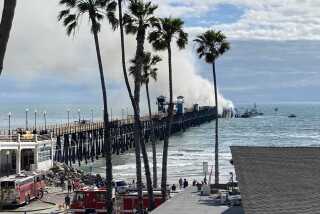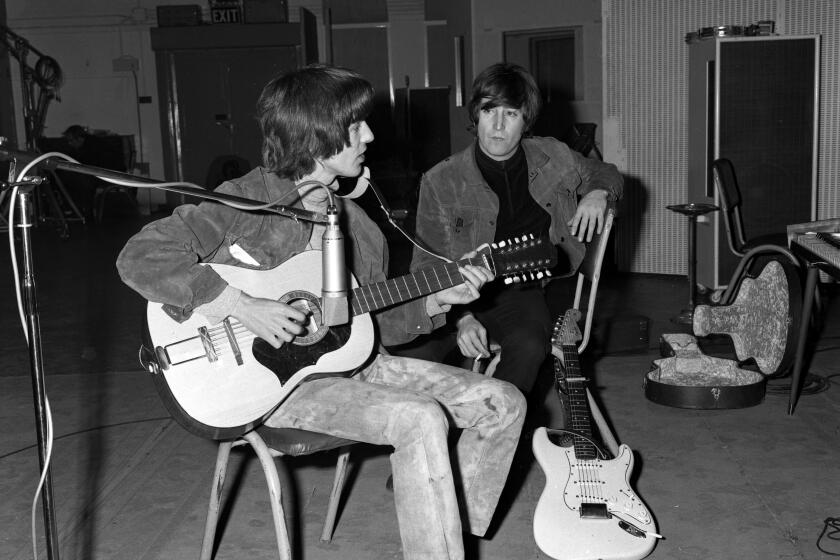Ventura’s Hilltop Cross Now a Beacon for Controversy
The 91-year-old cross overlooking Ventura is being targeted by a group that contends the city has run afoul of 1st Amendment guarantees against establishment of a state religion.
The cross is on public land in Grant Park, a rambling, sage-studded expanse atop 800-foot-high Mission Hill. The cross will be at the heart of a meeting next week between city officials and an attorney for three Ventura County residents upset by its religious symbolism.
“I’ve always felt the government has no business pushing religion,” said Stan Kohls, a retired special education teacher from Somis who said he would be a plaintiff in a prospective lawsuit over the cross. “As a non-believer myself, I see it as not fair, not right and illegal.”
A member of Americans United for Separation of Church and State, Kohls said he volunteered as a plaintiff when he heard that the national group was seeking county residents to challenge the city. If the effort results in a lawsuit, it will join a number of similar actions, including court battles over crosses in San Francisco and La Mesa in San Diego County.
In Ventura, city officials deny that a cross on public land and maintained with public funds violates the separation of church and state. Like officials at the receiving end of such lawsuits elsewhere, they contend the Serra cross is a time-honored landmark more than a religious icon.
“Some form of cross has been in that location since 1782,” City Atty. Bob Boehm said. “This cross has a distinctive historic character.”
It is widely believed that Father Junipero Serra planted a cross atop the hill on Easter morning in 1782. Some historians, however, doubt this.
In a 1930 history of the San Buenaventura Mission, a priest, Zephyrn Englehardt, wrote that the founder of California’s coastal missions was in no shape to climb the hill in 1782, and no record exists of a cross being raised on the hill that year.
Serra actually placed his cross not far from the beach, at the spot that would be occupied by the fledgling mission’s altar, Englehardt wrote.
At least two crosses were mounted on the hill in the 1800s and blown down by storms. After the hill had been without a cross for nearly 40 years, Ventura’s Chamber of Commerce and a women’s club in 1912 put up the present cross on land donated to the city by blacksmith Kenneth Peter Grant.
Even if a court agrees that the cross has historic value, that won’t necessarily signal a win for the city, according to Robert Boston, a spokesman for Americans United for Separation of Church and State in Washington, D.C.
“The history defense is common and it won’t work,” he said. “Courts have long recognized that the cross is the central religious symbol of Christianity, and it can’t be stripped of a religious connotation by claiming it’s historic.”
In decadelong cases in La Mesa and San Francisco, judges ruled the crosses on public land violated the separation of church and state. In both cases, the crosses were sold to private foundations. That strategy has yielded more lawsuits, with critics saying bidding was rigged against groups that might want to remove the cross.
Representing the upset residents in Ventura, San Francisco attorney Vince Chhabria declined to specify what he would like the city to do. But Kohls said he would like to see the cross placed in a museum.
“It’s important to recognize the importance of the Catholic Church and the mission in the founding of the city of Ventura,” he said.
But Rabbi Lisa Hochberg-Miller of Ventura’s Temple Beth Torah said she isn’t particularly bothered by the cross in Grant Park.
“It’s not an in-your-face display and it’s not proselytizing,” she said. “There’s a historicity to it.”
More to Read
Start your day right
Sign up for Essential California for news, features and recommendations from the L.A. Times and beyond in your inbox six days a week.
You may occasionally receive promotional content from the Los Angeles Times.







